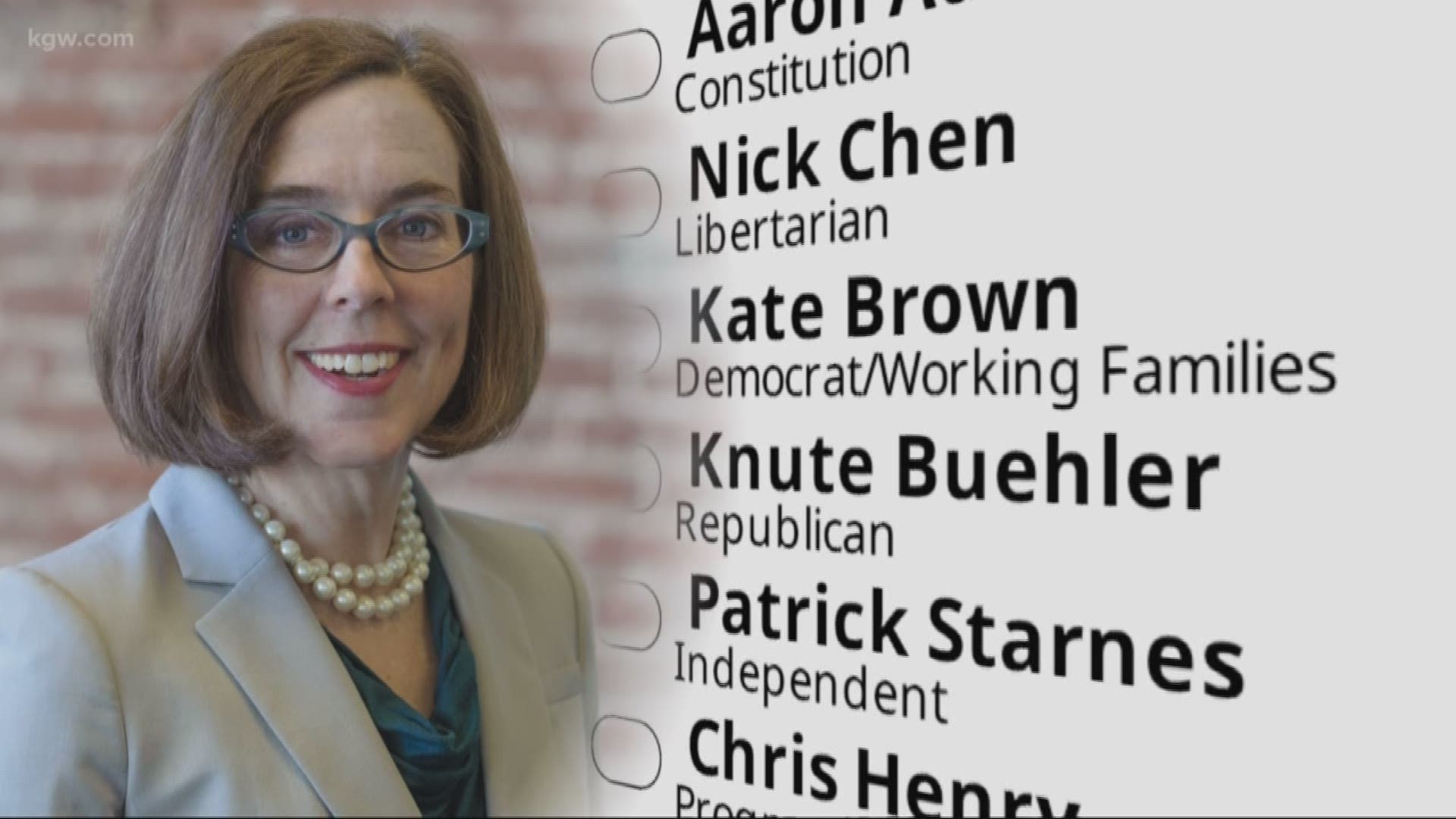PORTLAND, Ore. — Dozens of Oregon voters have posted their concerns on social media regarding the designation of politicians on their ballots as Democrats/Working Families.
Most notably, Gov. Kate Brown's political affiliation on the 2018 ballot is "Democrat/Working Families."
Some on social media have called the "Working Families" endorsement "propaganda," a "political slogan," and have wondered whether it signals bias or a paid advertisement... so KGW decided to Verify those claims.
What is Working Families?
Working Families is a registered political party in Oregon, as well as a handful of other states. The party was founded in New York in 1998 and supports a platform of minimum wage increases, paid sick days, raising taxes for the wealthy, creating green jobs and tackling student debt, according to their website.
Leaders and activists established an outpost of the party in Oregon back in 2006.
Because they are a minor political party, they're able to throw their support behind candidates they select in states where they're active -- and on Oregon ballots, candidates can be endorsed by multiple parties.
Their addition to a candidate's party affiliation on a ballot is not illegal, and doesn't count as an advertisement as some may assume.
“It’s a completely legitimate part of Oregon political system. It’s not a political action group, it’s not someone coming in and giving contributions or whatever, It’s actually an endorsement of a minor party in this case," Len Bergstein, president of Northwest Strategies, explained.
Gov. Brown and Working Families
This isn't the first year the Working Families endorsement has appeared alongside Gov. Brown's name on a ballot.
According to Sydney Scout with the Oregon Working Families Party, Gov. Brown received the same ballot endorsement during the 2016 election.
So how does this benefit Gov. Brown?
"Kate Brown has a limited amount of time to campaign, just like Knute Buehler does, so she’s going to try to talk to a broad range of folks. To have the endorsement or embracement of an organization that stands for the Oregon Working Families, it’s a way for her to shorthand tell people, 'I’m with you on these issues,' and then she can go off and talk in some of her other campaign ads or other messages about other issues she cares about," Bergstein explained.
Her campaign released the following statement to KGW News this week:
"Gov. Brown is proud to have the support of the Working Families Party. She has pushed hard as governor to increase the minimum wage, pass paid sick leave and protect health care for working families and mothers across Oregon."
How do I learn more about what's on my ballot without jumping to conclusions?
The best way to stay educated on your ballot is to read the voters' pamphlet you get with your ballot every election cycle. It includes explanations and platforms of all political parties -- including Working Families.
"If you’re really interested in this election and you want to see all sides of it, read the voters' pamphlet,” Bergstein said.
It's put out by the Oregon Secretary of State's office and is an unbiased tool to assist you as you cast your vote.

